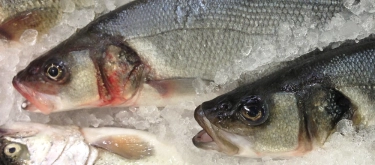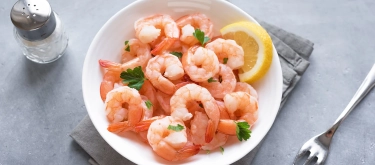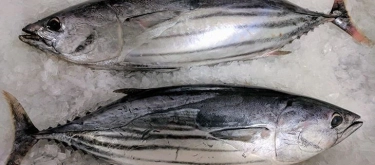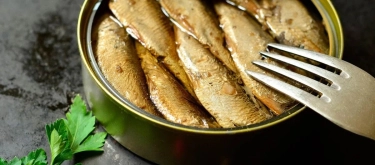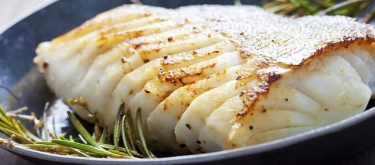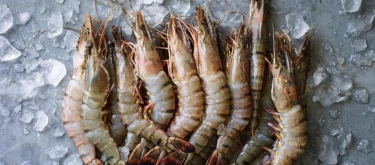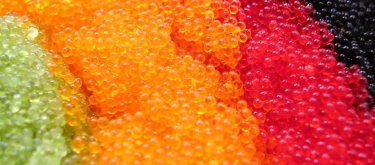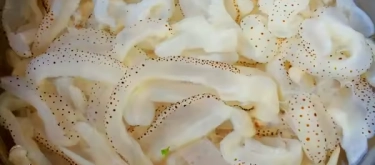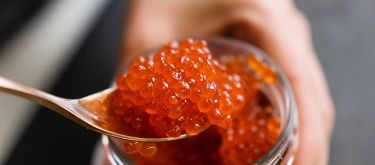Wakame Seaweed (Chuka): Taste Profile, Aroma, Benefits and Health Risks
Wakame seaweed (Undaria pinnatifida), often known simply as "Chuka," is a flavorful, nutritious marine vegetable central to Japanese and East Asian cuisines. Widely popular as a vibrant, refreshing salad, Chuka Wakame has become a staple appetizer in sushi restaurants worldwide. Its unique taste, texture, and numerous health benefits have contributed to its global popularity.
Wakame seaweed (Chuka) is naturally vegan, vegetarian, and gluten-free. However, Chuka salad preparations commonly include sesame seeds, sesame oil, soy sauce, or vinegar that may contain gluten or trigger sesame allergies. Individuals with seafood or iodine allergies should also exercise caution, as seaweed is rich in iodine.
What does Wakame Seaweed (Chuka) taste like?
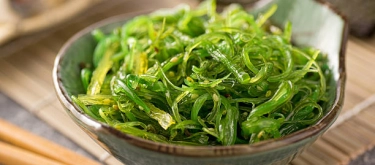
Complete Sensory Description
Taste
Chuka Wakame features a balanced combination of mild sweetness, delicate umami, and subtle brininess. The natural taste of wakame is gently oceanic, clean, and pleasantly earthy, with slight vegetal and marine undertones reminiscent of cucumber or fresh spinach. Traditional Chuka preparations are commonly marinated with soy sauce, sugar, sesame oil, and rice vinegar, imparting mild sweetness, tangy acidity, and nutty, savory depth.
Aroma
Wakame seaweed has a fresh, oceanic fragrance with subtle grassy notes. Chuka Wakame preparations develop enhanced aromas—sweetly fragrant from sesame oil and slightly tangy due to rice vinegar or citrus ingredients. Overall, its aroma is mild, appetizing, and refreshing, evoking the scent of fresh seawater and toasted sesame seeds.
Texture
Chuka Wakame’s texture is distinctive—crisp, chewy, and slightly slippery, providing an appealing sensory experience. The tender, yet resilient mouthfeel creates enjoyable contrast against softer foods like rice or seafood. The texture remains pleasantly crunchy even after marinating, enhanced further by sesame seeds that provide subtle crunch and textural contrast.
Appearance
Chuka Wakame is visually appealing, characterized by its bright, vivid green color. Typically cut into thin strips or threads, the seaweed glistens slightly from marinade dressings, often garnished with toasted sesame seeds, chili flakes, or finely sliced scallions, enhancing its vibrant, appetizing presentation.
In-depth Flavor Analysis
The characteristic mild sweetness of wakame results from naturally occurring polysaccharides and amino acids, notably alanine and glycine. These amino acids contribute gentle sweetness and subtly enhance umami, balancing the marine, vegetal flavors.
Umami flavor, pronounced in wakame, derives from glutamic acid and iodine-rich compounds present in seaweeds. Glutamic acid significantly enhances savory depth, generating the "fifth taste" sensation highly valued in Japanese cuisine.
Briny and marine undertones originate from mineral-rich seawater absorption during growth, notably iodine, potassium, magnesium, and trace minerals. Wakame grown in cold, nutrient-rich seawater tends to produce a cleaner, fresher taste with intensified marine minerality.
The traditional Chuka salad marinade significantly influences flavor complexity. Sesame oil introduces toasted, nutty richness, while soy sauce adds savory depth and balanced saltiness. Rice vinegar contributes refreshing acidity, harmonizing sweetness and saltiness, and enhancing overall flavor clarity. Additionally, sugar or mirin (sweet rice wine) provides gentle sweetness, rounding out the flavor profile into an appealing harmony.
Varieties and Culinary Applications
Varieties of Wakame
- Fresh Wakame: Tender, crisp texture ideal for salads, soups, or quick-cooking methods.
- Dried Wakame: Rehydrated quickly before use, versatile in soups, broths, and traditional Japanese dishes.
- Prepared Chuka Wakame (Seaweed Salad): Ready-to-eat salad dressed with sesame oil, vinegar, soy sauce, sugar, and sesame seeds.
Culinary Applications
- Salads & Appetizers: Popular as Chuka Wakame salad, combining freshness, flavor complexity, and attractive presentation.
- Soups & Broths: Essential ingredient in miso soup, enhancing umami flavor and nutritional benefits.
- Sushi & Sashimi: Garnishing sushi rolls, sashimi platters, or seafood dishes, adding freshness, texture, and color.
- Side Dishes & Garnishes: Accompanies seafood, grilled meats, rice dishes, or noodles, enriching flavor and visual appeal.
- Nutritional Supplementation: Consumed for health benefits due to iodine, mineral, and antioxidant-rich properties.
Selection and Storage
Selecting Quality Wakame (Chuka)
- Choose bright green, glossy, firm-textured Chuka Wakame without discoloration, sliminess, or strong fishy odor.
- For dried wakame, select clean, uniformly colored products without impurities or moisture damage.
Storage Recommendations
- Fresh or prepared Chuka Wakame salad should be refrigerated (below 4°C/39°F) and consumed within 3–4 days after opening.
- Store dried wakame in airtight containers, away from moisture, heat, and direct sunlight; lasts several months or more.
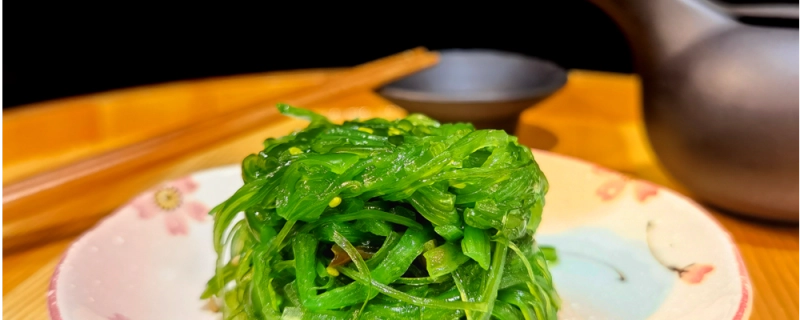
Nutritional Insights
-
High in Iodine:
Essential for thyroid function, metabolism regulation, and overall endocrine health. -
Rich in Dietary Fiber:
Supports digestion, promotes gut health, and aids in cholesterol regulation and blood sugar stabilization. -
Antioxidants and Vitamins:
Contains vitamins A, C, E, K, and antioxidant compounds (fucoxanthin) reducing oxidative stress and inflammation. -
Minerals:
Excellent source of calcium, magnesium, potassium, iron, and trace minerals, essential for bone strength, electrolyte balance, and cardiovascular health. -
Low-Calorie, Nutrient-Dense:
Ideal for weight management and balanced diets, offering significant nutritional benefits with minimal caloric content.
Expert Insights & Culinary Tips
-
Balancing Flavor:
Combine Chuka Wakame salad with mild-tasting foods like rice, avocado, seafood, or tofu to balance strong savory and umami notes effectively. -
Flavor Pairings:
Wakame pairs beautifully with sesame seeds, cucumber, avocado, tofu, citrus (lime, yuzu), ginger, chili, seafood (crab, shrimp), and miso-based dishes. -
Texture Optimization:
Serve slightly chilled to enhance crispness, freshness, and overall enjoyment of texture and flavor.
Interesting and Curious Facts
- Wakame has been consumed in East Asia for centuries, historically recognized for medicinal properties, nutritional benefits, and symbolic significance in health and longevity.
- Originally native to the coasts of Japan, Korea, and China, wakame cultivation has expanded globally, reflecting increased international demand and culinary popularity.
- Wakame is recognized globally for environmental sustainability, requiring minimal resources for cultivation, contributing positively to marine ecosystems.
Harm and Dietary Considerations
-
High Iodine Content:
Excessive consumption of wakame may affect thyroid function, especially in individuals sensitive to iodine or with thyroid conditions; moderation is recommended. -
Allergic Reactions:
Individuals with seafood, iodine, or sesame allergies should exercise caution and carefully check prepared Chuka salad ingredients.
Religious Dietary Considerations
Wakame (Chuka) is widely permissible across major religious dietary traditions:
- Islam: Permissible (Halal).
- Judaism: Permissible (Kosher, Parve).
- Hinduism & Buddhism: Permissible, commonly consumed as part of vegetarian diets.
- Christianity & other religions: No known dietary restrictions.
Final Thoughts & Sensory Journey
Chuka Wakame provides a captivating culinary experience, blending subtle sweetness, fresh oceanic umami, and delightful texture. Its vibrant appearance, nutritional benefits, and versatile culinary uses have elevated it into an international delicacy, celebrated for refreshing taste and healthful properties alike.
Resources
- Mouritsen, O. G. (2013). Seaweeds: Edible, Available, and Sustainable. University of Chicago Press.
- Chapman, V. J., & Chapman, D. J. (1980). Seaweeds and Their Uses. Chapman and Hall.
- McGee, H. (2004). On Food and Cooking: The Science and Lore of the Kitchen. Scribner.


